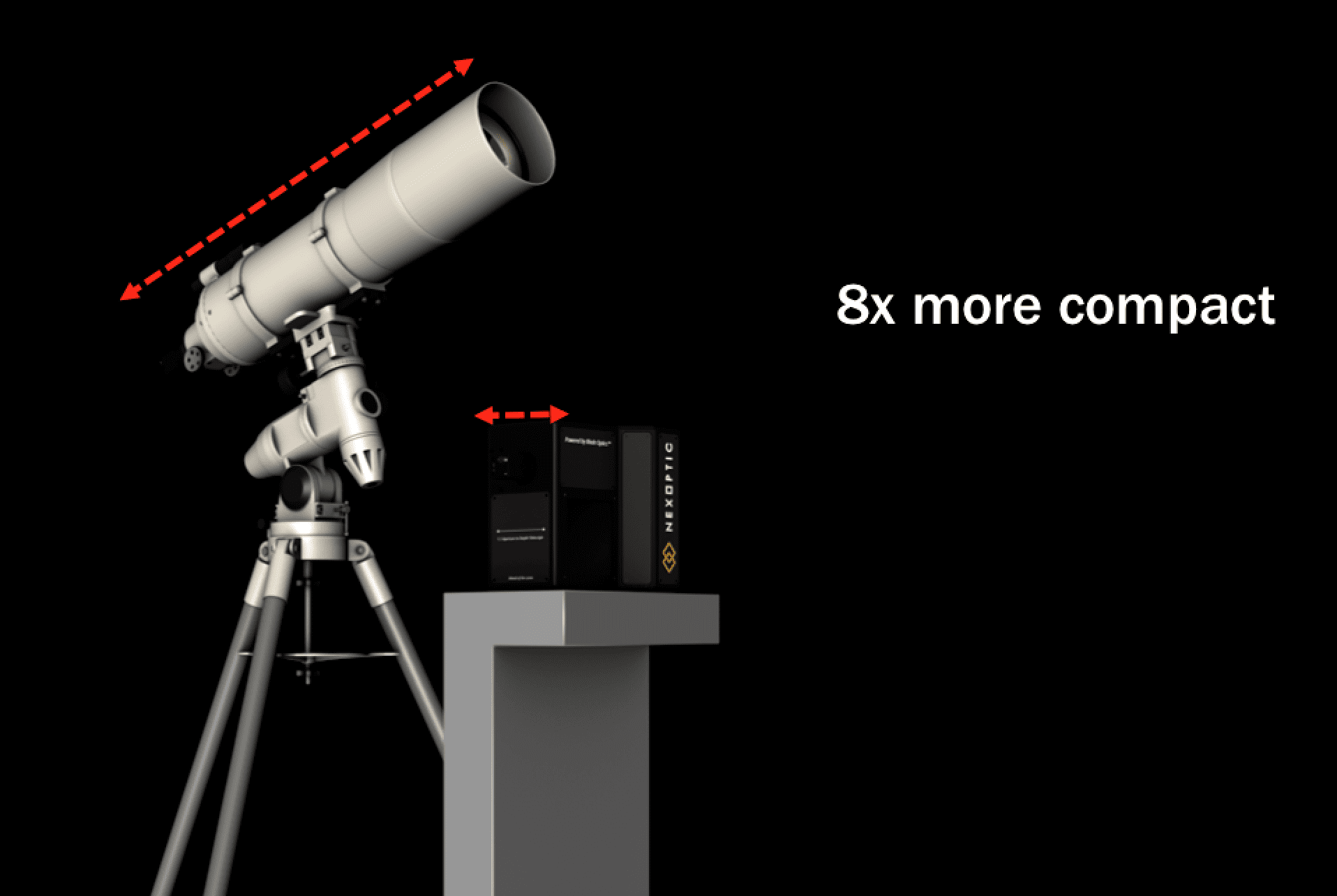Betting on the Future
“A good hockey player plays where the puck is,” said Wayne Gretzky. “A great hockey player plays where the puck will be.”
It’s the same when you’re investing in tech.
The industry moves so fast, and changes so quickly from year to year, that it’s hard making a good short term bet.
Like The Great One, you’re better off figuring out where the puck is going to be in future, and try to play there.
That means understanding the bigger themes of tech development, and making longer term bets on those players who are building the future today.
A good example would be the meteoric rise of Apple after the release of the iPod. Until that time our digital lives were limited to our computers … but Steve Jobs saw the future was in mobile computing.
He started out with iPods, but kept adding computing power until the smartphone became ubiquitous.
The impact on the world around us has been so profound that it’s hard to believe the first iPhone was released only 10 years ago.
Now smartphones are just ho-hum. We’ve been there and done that, and other than some iterative changes, there’s nothing really groundbreaking happening in the smartphone market.
Disruptive technologies have moved on, and thanks to the exponentially increasing power of computing and cloud storage systems, those technologies are transforming our society at an ever increasing rate.
That also makes it harder to stay ahead of the curve.
As a first step, here’s a Top 10 Guide to the most important tech trends for the coming decade:
1. The Cloud Turns Into a Fogbank with the Internet of Things.

In 2014 the Cloud computing market was estimated by research firm Forrester’s at $40.7 billion. By 2020 the cloud is expected to generate $241 billion.
Amazon may be better known for its online shopping, but the growth of the company now and in the near future is in its delivery of Amazon Web Services. I’ve used it myself to build the backbone for a media server network.
AWS allows you to build computing systems on Amazon servers, and deliver content or data anywhere to anyone. For example, Netflix delivers its content via Amazon’s S3 servers.
According to a report by Capital Group, AWS was the fastest growing business in the history of Information Technology.
Other major companies also work in this area, such as Apple’s iCloud, the Google Cloud Platform or the IBM Cloud.
What is really driving change now is how the Cloud is turning into a ‘Fogbank’, reaching into every aspect of your life through what is now called the ‘Internet of Things’.
Formerly ‘dumb devices’ like your vacuum cleaner, your refrigerator, your car, and your thermostat are now connected to the cloud, which means you are too.
As gadget companies create new apps for all the appliances and devices in your life, expect this sector to grow exponentially.
2. Quantum Leaps
One reason the cloud is growing so quickly is because advances in computing and data storage technology are improving at an ever increasing pace. Computing costs declined by 33 per cent per year on average from 1990 to 2013, storage by 38 per cent, and Bandwidth by 27 per cent (Kleiner Perkins Caufield and Byers report).
But the increasing speed of computing eventually hits a wall.
That has now changed as companies are releasing the first commercially viable Quantum computers.
Ordinary computers calculate using binary code, so each unit of data, or ‘bit’ is either a 1 or a 0.
Quantum computers use Qbits, which can be 1 and 0 at the same time, through the bizarre and fuzzy math of quantum mechanics.
The reason that’s so powerful is that when classic computers consider one option against another option, they must consider them separately. Quantum computers consider all options simultaneously to come up with the answer, and are therefore exponentially faster and more powerful.
One of the most advanced companies in the space is Vancouver-based D-Wave, which produced the first commercially available quantum computers.
Another is IBM, which this year unveiled its plan to make quantum computing available over the IBM Cloud in a program called IBM Q.
In short, quantum computing is officially here, and will be the next big thing in computing technology and cloud services.
3. Bending Reality: VR and AR

Not interested in IT? Looking for a tech play that’s a little more fun?
Look no further than the growing universe revealed by Virtual Reality and Augmented Reality.
VR allows the user to enter a virtual world by wearing goofy looking goggles. The users are dropped into a 3D world where they can look around in 360 degrees as if they were in that location.
The technology would allow people to walk the streets of Venice while in their own living rooms, but it has a serious side as well.
Techs safely back at home base can get real world views of broken equipment through VR cameras placed on the scene. Consulting surgeons can be placed in a far-off operating room and look around as if they were actually present.
Just as importantly, companies around the world are diving headfirst into Augmented Reality, led by Apple and Google.
Augmented Reality, or AR, is the opposite of VR. Rather than placing you into an artificial world, it brings an artificial or augmented reality into your world.
The obvious example of augmented reality is Pokemon Go, the game that allowed fans to battle Pokemon superimposed on the world through their smartphones.
But true augmented reality will literally change the world. Map data combined with AR glasses will allow people to know everything about their surroundings instantly, and even interact with digital objects in the real world.
Take a look:
4. The Factory in Your House: 3D Printing
I saw my first 3D Printer in action 10 years ago, and they’ve come a long way since then.
Manufacturers are now looking at ways to build everything from sneakers (Nike) to entire houses using 3D printers.
Even more powerful, just as anyone with a computer can be a blogger, anyone with a 3D printer can be a manufacturer.
In the future, instead of relying on distant manufacturers for parts or products, people will be able to design and sell mass produced items from their home or small office.
5. Green Power: Renewable energy and electric cars.

Equedia has written a lot about the Green Power revolution. New advances in renewable energy and battery systems holds the promise of literally saving the planet, while maintaining the quality of life modern humans have become accustomed to.
Renewable energy is rapidly taking over from fossil fuels, and by 2025 it’s expected coal will be largely obsolete.
Companies like Solar City, GE’s windpower division and UGE will become the power giants of the future.
Someday you can tell your grandkids how people used to burn coal and gas for electricity, but they probably won’t believe you.
6. Artificial Intelligence – self driving cars, robots, smart assistants.

True AI is probably decades away, but in the meantime ‘machine learning’ is all the rage.
Computers that acquire more knowledge and capability as they acquire more data is the first step toward true Artificial Intelligence.
Flashy examples include IBM’s Deep Blue computer, which beat world chess champion Garry Kasparov in 1996, or Google’s Deep Mind, which defeated Korean champion Lee Se-Dol at Go last year.
Real life applications include self-driving cars, autonomous robots and drones, autonomous weapon systems, and cloud-based personal assistants like Siri, Google Assistant, Amazon’s Alexa, and Microsoft’s Cortana.
AI carries both a promise and a threat.
The promise is to make humans more efficient and more capable.
The threat is that AI will replace humans in many jobs.
In fact, AI-driven devices are expected to take more than 5 million jobs from humans between 2016 and 2020, ranging from taxi drivers to accountants.
7. Intelligence Augmentation: Enter the Cyborg

As we detailed in our earlier story on this topic, IA is the flip side of Artificial Intelligence. Rather than make computers that are as smart or smarter than humans, IA combines artificial intelligence and cloud computing into a neural net in the brain, to make augmented humans smarter than computers.
The resulting cyborgs would be able to call up a vast range of data with perfect recall, and analyze incredibly complex problems in just seconds.
Tesla CEO and everyone’s favourite mad scientist Elon Musk is leading the charge. His new company Neuralink is producing a ‘neural lace’ that, once injected into the brain, connects the person to computer networks.
8. Imaging Technology – Blade Optics, Hyper Imaging combined with AI
Humans aren’t just limited by their ability to process data; they’re limited by the range of their senses.
If you’ve ever had to drive a car through a fogbank and a blinding blizzard at the same time, you’ll understand why new imaging technology will change the world.
This is one most people aren’t thinking of right now, but inventors around the world are doing incredible work to extend the range and ability of our senses.
In just five years, IBM predicts a new technology called ‘hyperimaging’ will give us superhero vision.
Hypervision allows humans to see beyond the limits of visible light, combining multiple bands of the electromagnetic spectrum.
People would literally be able to see through objects, and by combining AI computing and cloud data, our ‘eyes’ could see clearly through the fog, and even detect conditions like black ice on the road ahead.
Another technical advance is the Blade Optic system unveiled by Canada’s Nexoptic Technologies (TSX- V: NXO) (OTC: NXOPF) earlier this month.

The company has developed a new type of lens that allows much greater resolution and amplification than traditional lenses.
A satellite equipped with Blade Optics could count the hairs on your head from space. A smartphone equipped with Blade Optics would give you a powerful zoom lens in your pocket to use for photography or even as a telescope.
Every smartphone has a camera, so this new tech could easily become a household name within a few years.
9. Nanotechnology

Still in its infancy, Nanotechnology has the potential to disrupt dozens of current industries, such as health care, manufacturing, energy, computing, construction, aerospace, pharmaceuticals, and much more.
Many experts say the impact of nanotechnology will equal that of the industrial revolution, or the development of computers.
Nanotechnology involves measuring, manipulating or creating materials and machines at a size between one and 100 nanometers. A nanometer is one-billionth of a meter, and to give some idea of the scale, an average human hair is 100,000 nanometers wide.
Inside your computer today there are switches that are only 100 nanometers wide, so you could fit 1,000 of those across the width of that same human hair.
Manipulating material at this level allows producers to create stronger and lighter materials, better conduction material, smaller and more powerful microchips, improved solar panels, or medical treatments that target cancer at the cellular level.
10. Cryptocurrencies and Blockchains
Some think Bitcoin is a flash in the pan, but so-called cryptocurrencies like Bitcoin are here to stay.
Even more important than Bitcoin are the Blockchains that make cryptocurrencies work, which have the potential to disrupt the entire banking industry.
Bitcoin is only the most famous use of Blockchains, also known as ‘distributed ledgers’, a name only your accountant could love.
The Blockchain is really a network of widely available replicated databases that are visible to anyone inside the network.
When a digital transaction is carried out it is grouped into a digital ‘block’ with other transactions that occurred at the same time, and sent out to the network.
The block is validated by so-called ‘miners’, and added to a chain in a linear, chronological order.
Because no one can change any part of the Blockchain without that change being revealed, Blockchains become an ideal way to create a digital currency.
But Blockchains can do much more.
Because Blockchains can’t be tampered with, they could be used to protect property rights for music and film, protect the integrity of Peer 2 Peer file sharing, create new ways to establish your identity online, and even verify if someone is a valid voter.
Millions of dollars are being invested into Blockchain tech this year, especially by the big banks. While the future of Bitcoin may be uncertain, Blockchain looks like a sure bet.
THE FUTURE IS NOW
All of these technologies are already in the marketplace, but with their potential only beginning to be tapped.
Over the coming weeks we’ll take a deeper dive into each of these new industries, and hopefully give you some idea of companies or sectors that would be potentially strong investments.
Disclosure: We own shares in NexOptic Technologies and the Company is also an advertiser.












